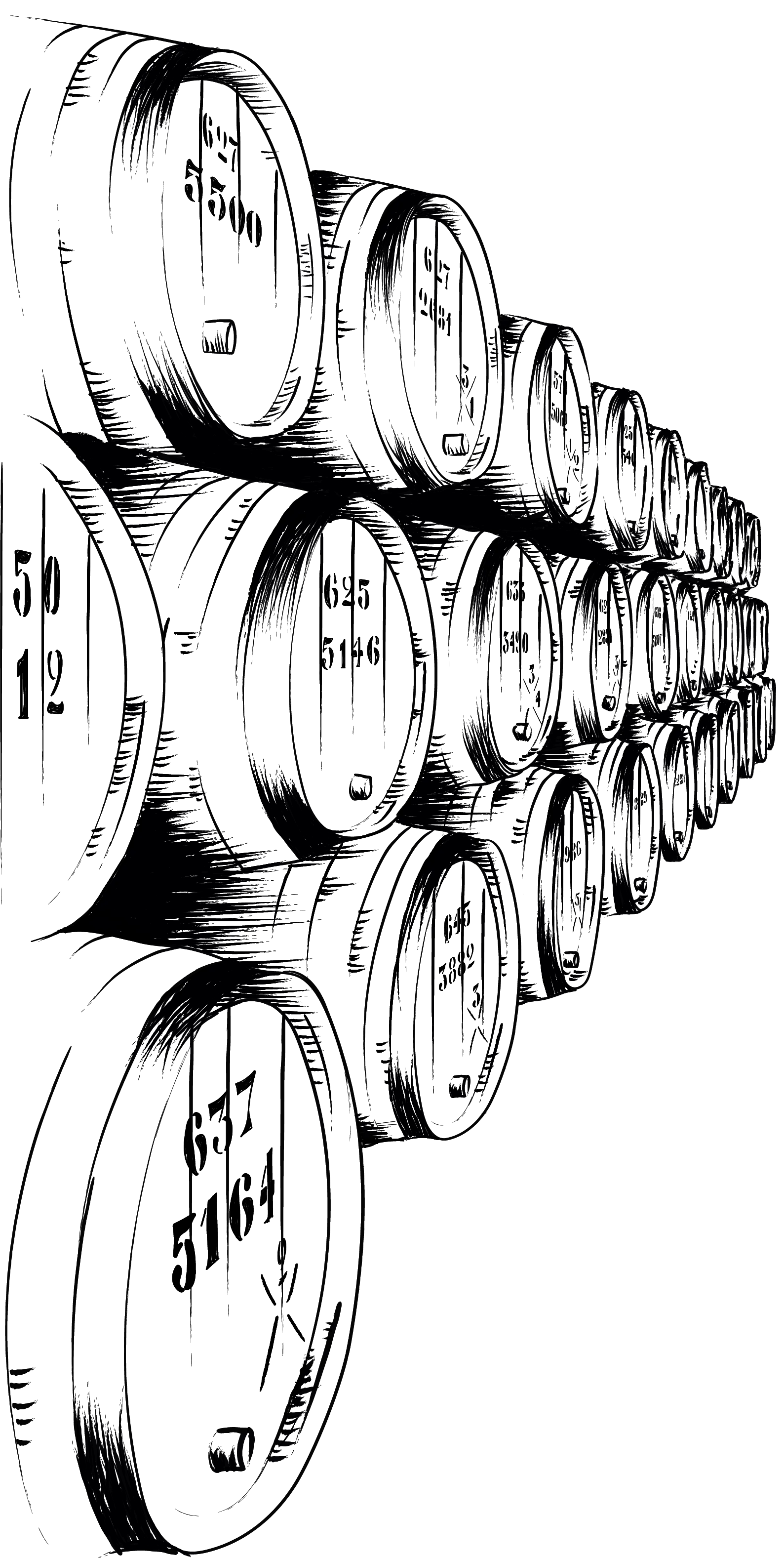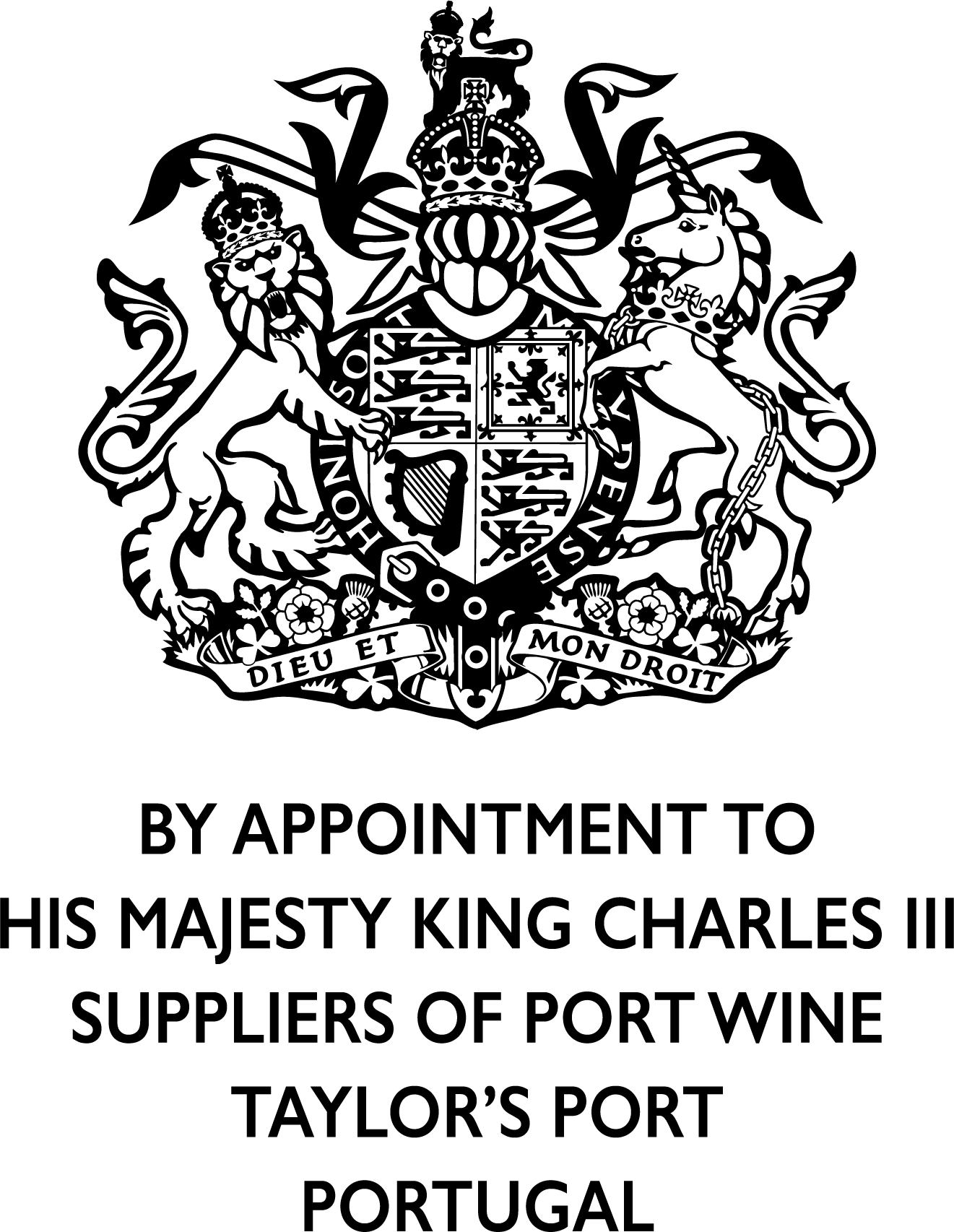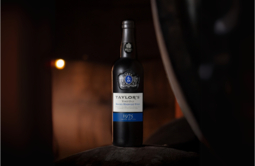Back hander
Traditionally Port is passed to the left so that it moves clockwise round the table. This is to ensure that every guest has the opportunity to pour him or herself a glass. Sometimes, however, a guest may pour a glass for the person seated to his or her right. This is known as a 'back hander'.
Baga
The first half of the 18th century saw rapid growth in demand for Port wine. This gave rise to great prosperity but also to some speculation and fraudulent practices. These included the addition of elderberry, known as baga de sabugueiro or simply as baga, to poor wines to give them colour and the illusion of quality. In 1756, the Marquis of Pombal, Portugal’s Prime Minister, stepped in to restore order. Among many other measures, he made it illegal to grow elderberry trees in the vineyard area or add baga to the wines. The abolition of the use of baga led to the introduction into the Douro of one or two grape varieties which tended to give colour to the wines, such as the Sousão.
Baixo Corgo
See 'Sub Regions'.
Barco Rabelo
"Throughout most of its history, Port wine was carried down the River Douro from the vineyards of the Douro Valley to the lodges of the Port Houses near the coast on special boats known as barcos rabelos. Until a series of dams were built across the Douro in the 20th century the river was fast running. Calmer reaches alternated with treacherous shoals, turbulent rapids and narrow sheer-sided gorges. To be able to navigate in these conditions, the barco rabelo had a flat bottomed hull and a long steering oar, operated from the top of a raised platform, which allowed the crew to carry out the very precise manoeuvres necessary to traverse the rapids and shallows. It was also fitted with a broad sail to assist it in making the journey back upstream. In the faster running reaches, it would have to be hauled against the current by teams of oxen straining on the towpath. The highly skilled and courageous crews of the barcos rabelos constituted closely knit communities with their own distinctive traditions and customs. In the 18th century some rabelos carried as many as 100 casks of wine. In 1779 legislation set the limit at 70 casks and the largest rabelos in use in the 20th century usually carried no more than 50. The last commercial journey of a rabelo is said to have taken place in 1964."
Beeswing
As a Vintage Port ages, a natural sediment, also known as a 'crust', forms in the bottle. Most of this sediment is made up of the wine's natural colouring matter which gradually precipitates as the wine ages. In time, some of this colouring matter may form very thin translucent flakes. These can sometimes be found floating in the wine if the bottle has been disturbed and are known as 'beeswing'.
Benefício
The benefício is the total volume of grape juice that is allowed to be made into Port in a given year. Having fixed the total amount, the authorities then apportion the benefícioto each individual vineyard. Only those vineyards whose classification allows them to produce Port receive benefício. Port vineyards are graded from 'A' (the highest grade) to 'F' (the lowest) . The higher the grade, the greater the proportion of a vineyard's production likely to be awarded benefício. The surplus of production over and above the amount of benefíciois made into table wine.
Bin
In wine language, a bin is a section or compartment of a cellar. So a wine that is being 'binned' is being placed in the cellar.
Bishop of Norwich
It is customary for the Port to be passed clockwise round the table, so that all the guests have a turn at pouring themselves a glass. If the bottle or decanter comes to a standstill, the person who has failed to pass it on may be asked, 'Do you know the Bishop of Norwich?'. This is a polite reminder to get the Port moving again. The origin of ‘Do you know the Bishop of Norwich?’ is usually attributed to Henry Bathurst, Bishop of Norwich from 1805 to 1837. Bishop Bathurst lived to the age of 93 by which time his eyesight was deteriorating and he had developed a tendency to fall asleep at the table towards the end of the meal. As result he often failed to pass on the Port decanters which would accumulate by his right elbow. According to some authorities, the custom may have originated with John Sheepshanks, Bishop of Norwich from 1893 to 1910. Athough Bishop Bathurst appears to be the most plausible source of the tradition, it seems that Bishop Sheepshanks did his best to perpetuate it.
Blending
Blending is the art of mixing different wines together so that their combination is more harmonious, interesting or attractive than any of the individual components. Blending may be carried out for different purposes such as ensuring the continuity of style of a particular type of wine or giving a wine balance and completeness. Blending is a very important part of the process of making Port wine and requires skill, experience and intuition.
Bottle sizes
The chart below shows the main Vintage Port bottle sizes. The most common sizes are the standard 75cl bottle, the half bottle and the magnum. The larger sizes are rarer. Half bottles are very useful and should be part of any Vintage Port collection or wine list. A half bottle is the perfect size for two or three people wishing to enjoy a freshly decanted Vintage Port in a restaurant or at home. Magnums and double magnums, equivalent to two and four standard bottles respectively, are considered by many collectors to be the best sizes for long term ageing. The imperial, holding the equivalent of eight bottles, is an impressive and memorable way of serving Vintage Port to a large number of guests. These majestic bottles are rare and much prized by collectors. Older Vintage Ports may occasionally be found in 'tappit-hens', holding the equivalent of three bottles, but these are no longer sold today.
Type of Bottle | Capacity | |
In litres | In standard bottles | |
Normal bottle | 0,75 | 1 |
Half bottle | 0,375 | ½ |
Magnum | 1,5 | 2 |
Tappit-hen | 2,25 | 3 |
Double magnum | 3 | 4 |
Imperial | 6 | 8 |
Brandy
Brandy is a spirit distilled from wine. In the making of Port, brandy is added to stop the fermentation and preserve some of the natural sweetness of the grape in the finished wine. This process is known as 'fortification'. The brandy used to fortify Port bears little resemblance to the brown coloured beverage brandies, often aged for some time in wood, which most people associate with the word. The brandy used to make Port is young, clear and colourless and its aromas are very pure and delicate. Its strength is 77% alcohol by volume. Provided it meets the very stringent standards established by law, the brandy need not be produced in Portugal although many very good fortifying brandies are in fact Portuguese. It is important that the fortifying brandy is of very good quality so that it does not intrude on the aromas of the wine. Also, in an old Port, the brandy will create a synergy with the aromas of the wine, adding an additional dimension of complexity, something that a coarse or badly made brandy will not be able to do. Taylor's works very closely at every stage of the process with the specialised distillers from which it acquires its brandies. The fortifying brandy is often referred to as 'grape spirit' or by its Portuguese name aguardente vínica.


discover more



